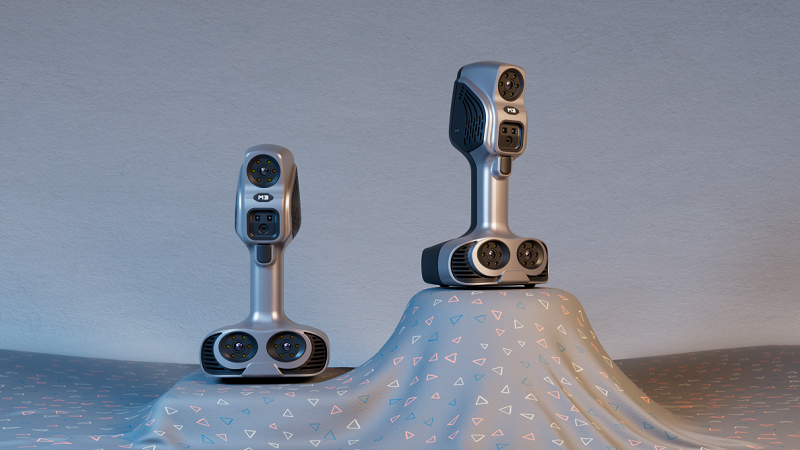How to scan dark, black, and reflective objects with a 3D scanner?
01/17/25
The unique surface characteristics of dark, black, and reflective objects present challenges for 3D scanners during the data capture process, which is inherently related to the operating principle of 3D scanners.
3D scanners operate on the basis of optical metrology to capture the topographical data of object surfaces. When dealing with black or dark-colored objects, their high light-absorbing characteristics result in a diminished reflectance of incident light, thereby complicating the scanner’s ability to detect adequate levels of reflected light. Conversely, specularly reflective surfaces generate pronounced mirror-like reflections, causing the 3D scanner to receive an uneven distribution of light. This can lead to technical issues such as overexposure, data distortion, and the loss of fine surface details, which are critical for accurate 3D reconstruction.
The iReal M3 dual-infrared laser 3D scanner by the 3DeVOK brand features an innovative dual-light source mode, incorporating 2 infrared VCSEL structured light sources and 7 infrared parallel laser lines. In terms of tackling scanning tasks involving special materials, how does it perform?
Case Study 1: 3D Scanning of a Black Motorcycle Engine Cover in an Outdoor Environment
In the field of motorcycle customization, 3D scanning smooth black parts outdoors presents challenges due to direct sunlight and reflective surfaces. Confronting this challenge, the project team employed the iReal M3 professional 3D scanner, utilizing its infrared parallel laser mode with marker point stitching, allowing for scanning without the need for spray powder. This approach effectively addresses the issues associated with direct sunlight and scanning black materials in outdoor settings. Despite complex outdoor lighting conditions, the M3 3D color scanner is still able to accurately capture the details of the motorcycle parts.
 – Scanning Black, Reflective Hood
– Scanning Black, Reflective Hood
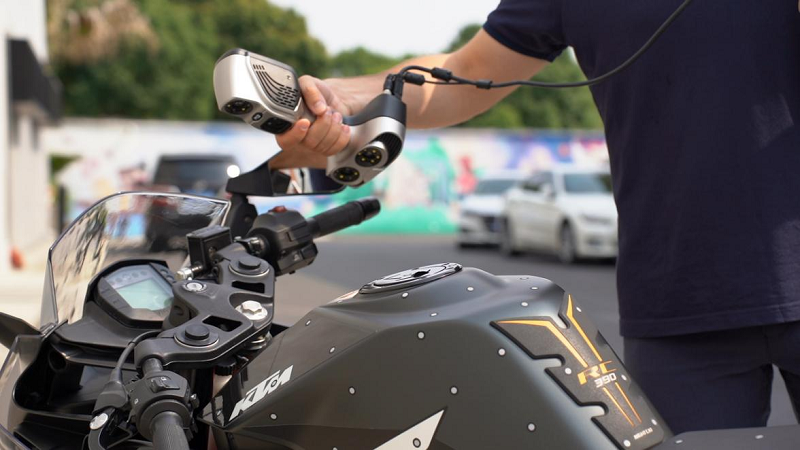 – Scanning in Sunlight
– Scanning in Sunlight
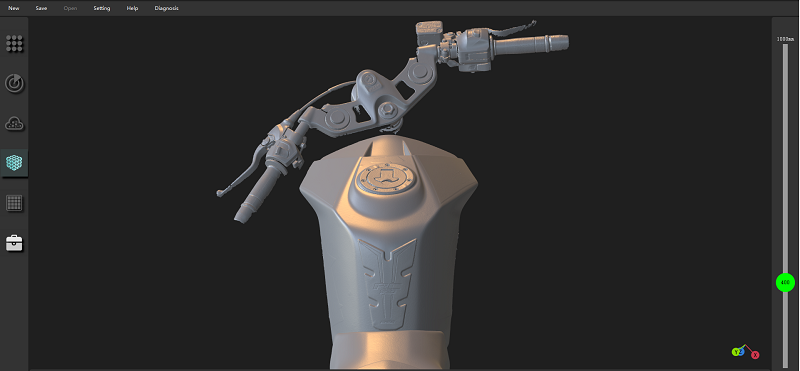
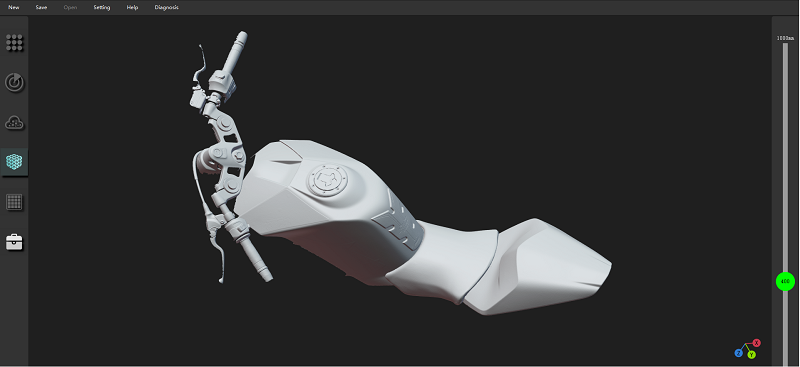 – 3D Scanning Data Display
– 3D Scanning Data Display
Case Study 2: 3D Scanning of Black, Reflective Material Workpieces
In a recent project, engineers were tasked with reverse engineering 3D scanning a black metallic component. The infrared parallel laser technology of iReal M3 handheld 3D scanner enabled direct scanning of the workpiece without the need for scanning spray.
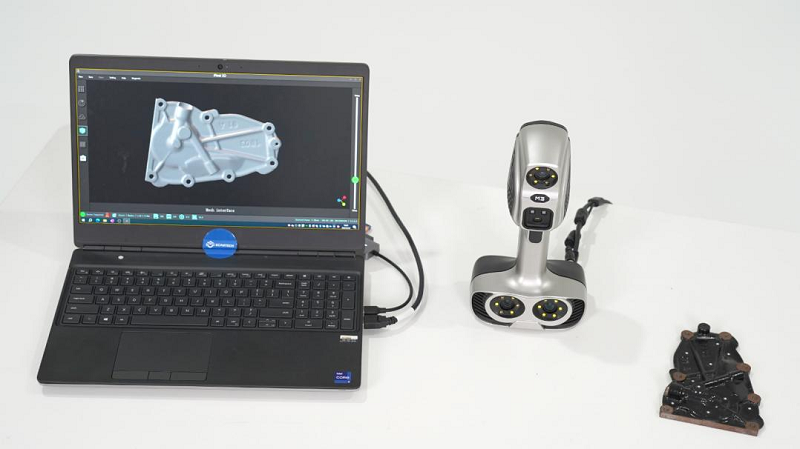

In just a few minutes, the portable 3D scanner successfully captured detailed information from the surface of the black metal component, achieving a maximum precision of 0.1mm. This level of detail ensures the accurate capture of complex geometric features, including fine grooves. These high-quality 3D data provide precise support for subsequent CAD design work.
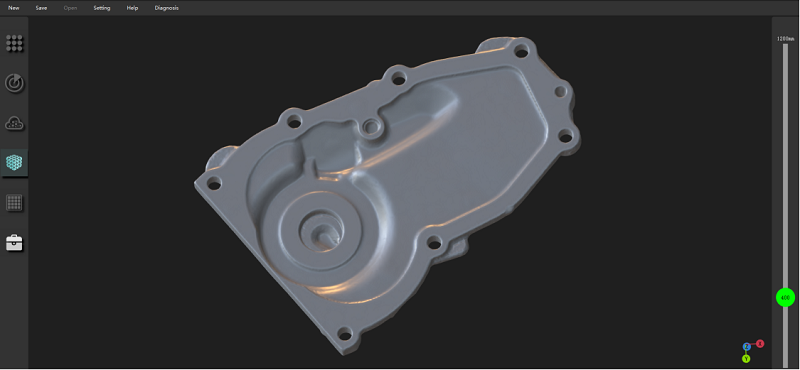
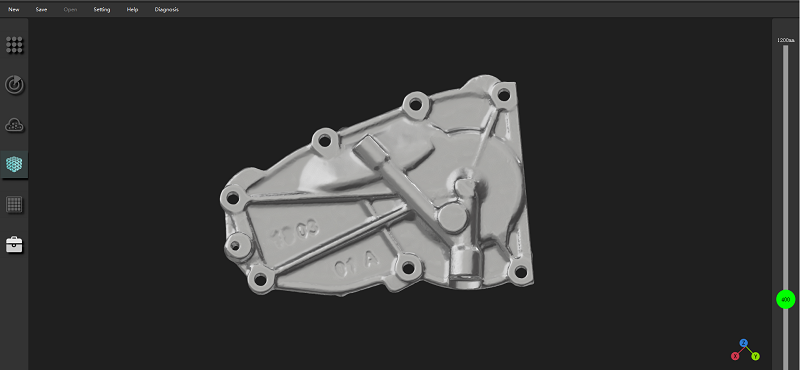 – 3D Scanning Data Display
– 3D Scanning Data Display
Case Study 3: 3D Scanning of a Motorcycle Engine Side Cover
For most black, reflective materials, the iReal M3 infrared 3d scanner can handle the scanning process without the need for spray powder. However, when dealing with high detail requirements and highly reflective (high-gloss) objects, it is recommended to apply spray powder to the item for better results. In the case of the following motorcycle engine side cover, the client required a high level of detail, intended for reverse engineering. A complete and highly accurate 3D scan model of the side cover was needed. By utilizing the “Data Quality Color Map” feature of the 3DeVOK Studio scanning software, which clearly displays scanning data in real-time, multiple-angle scanning was conducted to scan the yellow and red areas, aiming to obtain more comprehensive data.
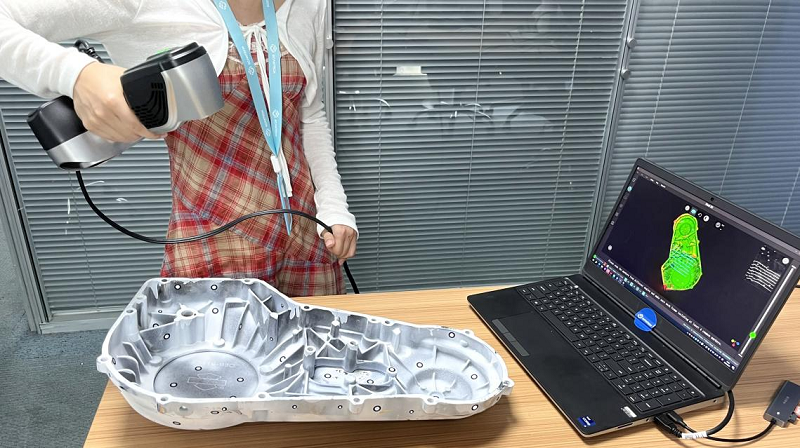
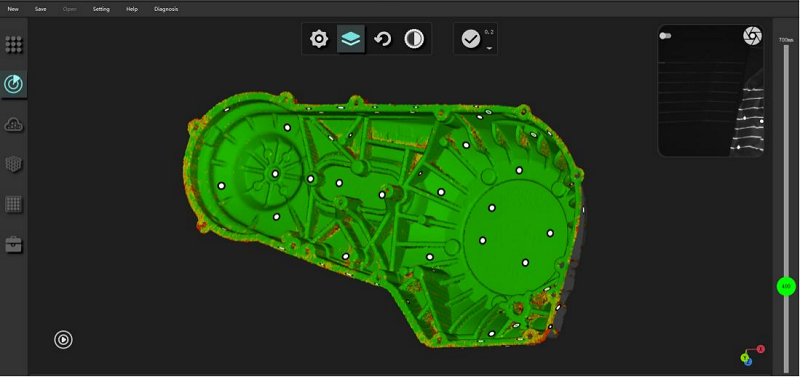 – Data Quality Color Map
– Data Quality Color Map
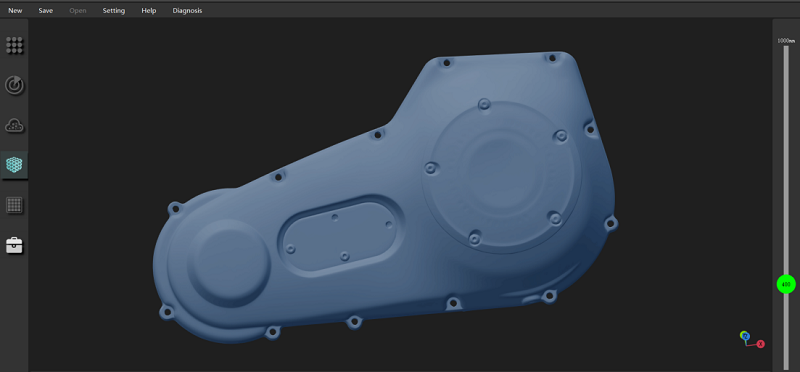
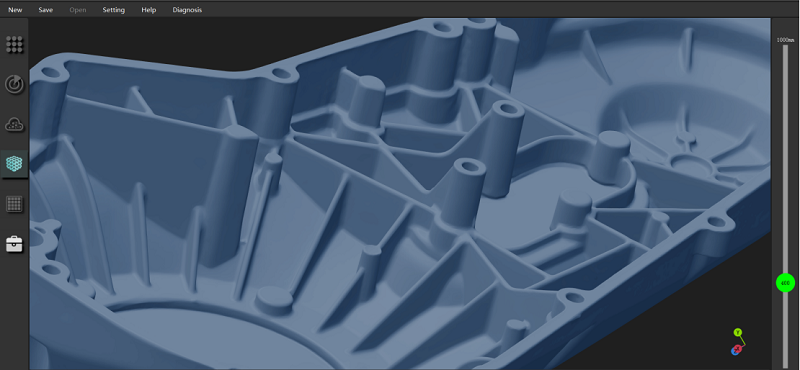 – 3D Scanning Data Display
– 3D Scanning Data Display
Sharing Scanning Skills for Dark, Black, and Reflective Materials
- Adjusting Software Exposure Settings: When scanning black objects, it is advisable to increase the exposure value within the scanning software to enhance the light capture on the black surface, ensuring that the details in the darker areas are accurately captured.
- Adjusting Scanning Angles: For reflective objects, it’s crucial to avoid direct scanning of the reflective surface. By modifying the scanning angle, you can minimize specular reflections and enhance the accuracy of the collected data.
- Spray Powder Treatment: In situations where high detail is necessary, especially for highly glossy objects, apply a uniform layer of powder to the object’s surface before scanning. Maintain a distance of 15-20 centimeters while spraying and move steadily to ensure an even spread of the coating, preventing any damage to the layer upon contact. (Note that markers should not be placed on the object’s surface before or after spraying powder. Auxiliary tools such as a turntable can be used for data collection.)
From the above cases and experience sharing, we can observe that while black and reflective objects pose challenges to 3D scanning, selecting the appropriate scanning equipment and adjusting the scanning parameters still allow us to obtain high-quality 3D data. In practical operations, the flexible application of these techniques and methods will help enhance scanning efficiency and accuracy.
Related Articles
View Our Product
